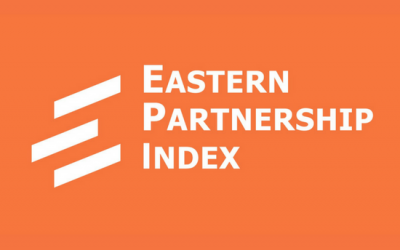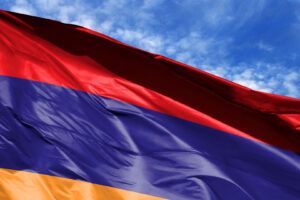The Eastern Partnership (EaP) Civil Society Forum has published its annual index looking at the six EaP countries (Armenia, Azerbaijan, Belarus, Georgia, Moldova and Ukraine) and their relations with the European Union.
The report is based on two indicators: firstly, convergence with the EU, that is, how each EaP state adopts EU norms and European standards and secondly, how close each state is to European standards in terms of governance, economic performance and the business climate.
In terms of convergence with the European Union, Ukraine is ranked first with Armenia in second, followed by Moldova, Georgia, Azerbaijan and Belarus.
According to the second indicator, Georgia and Moldova are ranked joint first, followed by Ukraine, Armenia, Azerbaijan and Belarus.
In terms of democratic norms, Ukraine and Georgia stand out while Azerbaijan and Belarus have the worst indicators. Ukraine and Moldova were reported to lag behind when it comes to business environment, while Azerbaijan tops the assessments about sustainable development standards, followed by Belarus, Ukraine, Armenia, Moldova and Georgia.
The Eastern Partnership Index 2017 charts the progress made by the six Eastern Partnership countries towards sustainable democratic development and European integration. The Index measures steps taken on the path towards good governance, including the observance and protection of democracy and human rights, sustainable development, and integration with the European Union.
The EU’s Eastern Partnership initiative, launched in 2009, signalled the commitment of the governments of the six Eastern European partner countries (Armenia, Azerbaijan, Belarus, Georgia, Republic of Moldova, and Ukraine) to respect the values of democracy and human rights, and to align with EU standards of good governance and the rule of law. From the beginning of the Eastern Partnership initiative, the respective national governments in the Eastern Partnership countries expressed clear differences in aspirations concerning closer integration with the EU. While some had aspirations of membership, others saw a turn to the west as a challenge to long-lasting ties with Russia, and others wanted to pursue a more multipolar approach.
The period covered by the Index 2017 marked the first full years of visa-free travel agreements between the EU and respectively Ukraine and Georgia, and continued implementation of the Association Agreements between the EU and respectively Georgia, Moldova, and Ukraine, including the Deep and Comprehensive Free Trade Area agreements. This edition of the Index charts the time when Armenia worked with the EU on moving towards an agreement around the non-trade parts of the Association Agreement, when gradual progress emerged towards more co-operation between the EU and Belarus, and when negotiations continued between the EU and Azerbaijan towards a “strategic modernization partnership agreement”.
| Country\ dimension rates | Armenia | Azerbaijan | Belarus | Georgia | Moldova | Ukraine |
| Approximation dimension | 0.66 | 0.56 | 0.52 | 0.64 | 0.65 | 0.73 |
| Deep and Sustainable Democracy | 0.60 | 0.32 | 0.27 | 0.70 | 0.69 | 0.71 |
| EU Integration and Convergence | 0.65 | 0.57 | 0.51 | 0.65 | 0.70 | 0.72 |
| Sustainable Development | 0.72 | 0.79 | 0.78 | 0.57 | 0.57 | 0.77 |
| Linkage dimension | 0.50 | 0.47 | 0.45 | 0.71 | 0.71 | 0.66 |
| International Security, Political Dialogue and Co-operation | 0.46 | 0.38 | 0.41 | 0.75 | 0.70 | 0.69 |
| Sectoral Co-operation and Trade Flows | 0.36 | 0.46 | 0.40 | 0.56 | 0.70 | 0.67 |
| Citizens in Europe | 0.68 | 0.55 | 0.55 | 0.81 | 0.73 | 0.62 |




